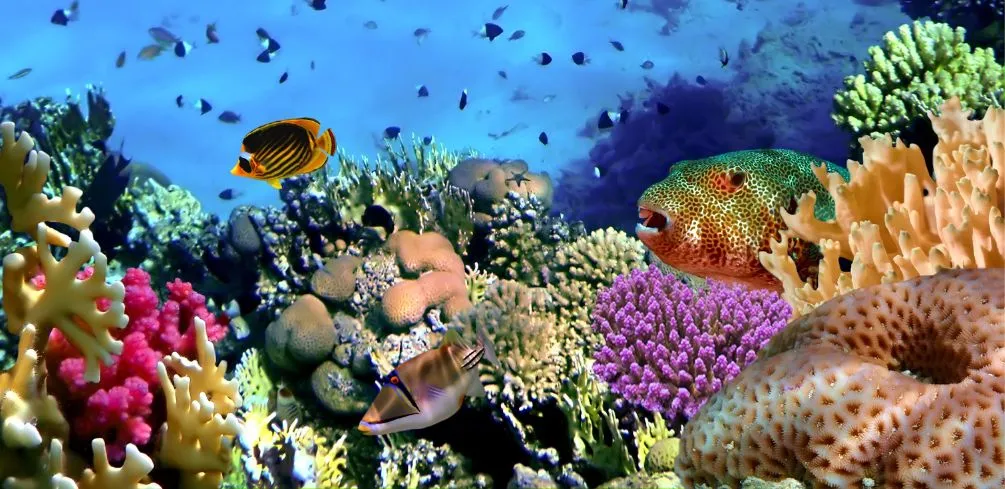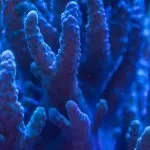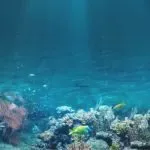Coral reefs are among the most fascinating and diverse ecosystems on our planet. Thanks to their unique structures and incredible biodiversity, they have become a hot topic for scientists, conservationists, and nature enthusiasts alike.
But did you know that there are actually three types of coral reefs? Each one is distinct in its own way, offering different benefits and challenges for marine life and humans alike.
In this article, we’ll take a closer look at the three main types of coral reefs: fringing reefs, barrier reefs, and atolls. We’ll explore their defining characteristics, the species that call them home, and how they play a crucial role in our oceans’ health.
Whether you’re an avid scuba diver or just someone who appreciates the beauty of our natural world, understanding these different types of coral reefs can help us appreciate the complexity and importance of these vital ecosystems.
Fringing Reefs (Shore Reefs)
Did you know that fringing reefs make up the most common type of coral reefs? These types of coral reefs grow directly from the shoreline into shallow lagoons. They are usually found in areas where there is a gradual drop-off from the shore into deeper waters.
Fringing reefs are known for their vibrant colors and diverse marine life, making them a popular spot for snorkeling and diving. A fringing reef is also referred to as a shore reef due to its location close to the coast.
They provide vital protection for coastal communities by acting as natural barriers against storms and large waves. In addition, they play a crucial role in maintaining the health of our oceans by supporting a wide variety of fish species and other marine organisms.
It’s no wonder why these types of coral reefs are so beloved by both humans and nature alike!
Barrier Reefs
Barrier reefs are the most extensive type of coral reefs in the world, and they are often called offshore reefs or reef platforms.
They are usually parallel to the coast and separated from it by a lagoon. Barrier reefs typically occur in areas where there is a steep drop-off from shore into deep water.
These types of coral reefs can be several kilometers wide and over 100 meters deep. One of the most well-known barrier reefs is the Great Barrier Reef, which is located off the northeastern coast of Australia.
It is the largest coral reef system in the world, covering an area of approximately 344,400 square kilometers. The Great Barrier Reef is made up of thousands of individual reefs and hundreds of islands, and it is home to an incredibly diverse range of marine life.
Barrier reefs provide important habitats for various types of coral, fish, and other organisms that rely on these ecosystems for survival.
Atolls Reef
Atolls are a type of coral reef structure typically found in warm, shallow ocean waters near the equator. They are usually circular or oval-shaped, with a central lagoon located within the surrounding reef. Atolls are formed over thousands of years when coral reefs grow around a volcanic island that eventually sinks beneath the surface of the ocean.
The reef continues to grow, and over time, the water’s surface forming the lagoon eventually becomes completely enclosed by the reef. Atolls are typically composed of a large number of coral species, and they are often home to a variety of marine life, including fish, mollusks, and sea turtles.
Atoll reefs are an important part of the marine ecosystem, providing food and shelter for a variety of species. They also provide protection from storms and waves, helping to maintain healthy coral communities. Atolls are also important for tourism due to their beautiful and unique features, and they can provide a great source of income for local communities.
Unfortunately, atoll reefs are highly vulnerable to the impacts of climate change, including rising sea levels and warmer ocean temperatures. Such changes can cause coral bleaching, which can have a devastating impact on the health of atoll reefs.
As such, it is important to protect these important ecosystems and reduce the effects of climate change.
Platform Reef
As we explored in the previous section, Barrier Reefs are a type of coral reef that can be found parallel to the coastlines of continents or larger islands. However, there is another type of coral reef that has its own unique characteristics and beauty.
This type is known as Platform Reef, and it grows on top of submerged volcanic islands or seamounts.
While fringing reefs grow directly from the shoreline, Platform Reefs only form once an island has completely sunk below sea level. The coral then continues to grow on top of the sunken volcano until it reaches the surface and becomes an island platform. These types of coral reefs can be found in areas with high seismic activity, like, underwater volcanoes such as in the Pacific Ocean’s Ring of Fire.
To further understand this fascinating type of coral reef, here are three interesting facts about Platform Reefs:
- Some platform reefs can reach heights of over 1,000 meters above sea level.
- Because they are formed from volcanic rock rather than limestone, platform reefs have a different composition than other types of coral reefs.
- The unique geography surrounding platform reefs often creates ideal conditions for diverse marine ecosystems to thrive.
As we continue to explore different reef types of coral reefs, it becomes clear that each one has its own distinct qualities and role in our planet’s delicate ecosystem.
From fringing reefs along shorelines to barrier islands surrounded by reefs protecting coastlines from waves and storms and now platform reefs growing on top of submerged volcanoes – these beautiful formations remind us just how incredible nature truly is.
Patch Reefs
Moving on to patch reefs, are small and isolated reefs that form in shallow waters. They are typically found close to the shore and can be seen in lagoons or bays.
Unlike other types of coral reefs, patch reefs do not have a continuous structure and are instead made up of small patches of coral.
Despite their size, patch reefs play an important role in the marine ecosystem by providing habitats for various marine species. In fact, they are often used as nurseries for young fish, which seek shelter among the many crevices and branches of the patch reef. To highlight this point further, let’s take a look at the table below, which shows some of the marine species that inhabit patch reefs.
| Species | Role |
|---|---|
| Clownfish | Live among anemones on patch reefs |
| Sea Urchins | Help control algae growth on patch reefs |
| Lobsters | Use crevices in patch reefs for protection |
| Octopuses | Hunt for prey among the branches of patch reefs |
As you can see from the table above, there is a diverse range of species that rely on patch reefs for survival. Despite their small size and isolated nature, these reefs play a crucial role in maintaining the health and diversity of our ocean’s ecosystems.
Characteristics Of Coral Reefs
Did you know that coral reefs cover less than 1% of the ocean floor but support more than 25% of all marine life?
These unique ecosystems are found in tropical and subtropical waters around the world, and they come in many different forms. Fringing reefs grow near shorelines and are the most common type of coral reef.
They form along shallow, calm waters where there is plenty of sunlight for photosynthesis. Barrier reefs are found farther from shore and are separated from land by a lagoon.
These massive structures can be hundreds of kilometers long and provide important protection for coastlines against storms and erosion.
Patch reefs are small, isolated formations that often occur within lagoons or around larger coral formations. Finally, isolated reefs are far from shore and not associated with any other landmasses.
Despite their distance from civilization, these remote locations still face threats from climate change, pollution, and overfishing.
It’s important that we continue to study these fascinating ecosystems to better understand how we can protect them for future generations to enjoy.
Benefits Of Coral Reefs
Coral reefs are not only beautiful ecosystems, but they also provide a plethora of benefits to humans and marine species alike.
Coral reefs act as natural barriers that protect coastlines from storms and wave erosion. This is particularly important for islands and coastal communities that are vulnerable to damage from hurricanes and tsunamis.
Fringing reefs grow along the shoreline, while smaller barrier reefs develop farther out to sea, forming a protective wall between the open ocean and the coastline.
Aside from their protective function, coral reefs also support an incredible amount of biodiversity. They are home to over 25% of all marine species, even though they cover less than 1% of the ocean floor.
These diverse ecosystems provide food and habitat for countless fish species, which in turn support commercial fishing industries around the world. In addition, coral reefs have been found to contain compounds with potential medicinal properties that could be used to treat diseases such as cancer and HIV.
The benefits of coral reefs are vast and invaluable, making their conservation crucial for both human and environmental health.
Frequently Asked Questions
What Is The Average Lifespan Of A Coral Reef?
Have you ever wondered how long coral reefs live?
Well, the average lifespan of a coral reef can vary depending on different factors, such as environmental conditions and human impact. However, studies have shown that some coral reefs can live for hundreds to thousands of years!
Just think about it, a coral reef could be older than your great-great-grandparents! Unfortunately, due to climate change and other human activities, many coral reefs are dying at an alarming rate.
It is crucial that we take action now to protect these precious ecosystems so they can continue thriving for generations to come.
How Do Coral Reefs Affect The Local Economy?
Coral reefs are not just beautiful underwater structures. They also play a significant role in the local economy.
For starters, coral reef tourism generates billions of dollars annually for coastal communities worldwide. Additionally, these reefs provide protection against storms and erosion, which can save millions of dollars in property damage.
Furthermore, coral reefs serve as habitats for countless marine species that are commercially important, such as fish and shellfish.
Overall, it’s clear that healthy coral reefs have a positive impact on the economy, and their preservation is crucial for both environmental and economic reasons.
Can Coral Reefs Survive In Areas With High Levels Of Pollution?
Can coral reefs survive in areas with high levels of pollution?
This is a pressing question that has been on the minds of many concerned individuals. The truth is, coral reefs are incredibly sensitive to environmental changes and can be severely impacted by pollution.
While some species may have a higher tolerance for pollutants than others, continued exposure to high levels of pollution can lead to their decline and eventual death.
It is important that we take steps to reduce the amount of pollution in our oceans and protect these vital ecosystems for future generations.
What Is The Largest Coral Reef In The World?
The Great Barrier Reef, located on Australia’s northeastern coast, is the largest coral reef system in the world.
Spanning over 2,300 kilometers and consisting of more than 3,000 individual reefs, this natural wonder is home to an incredible diversity of marine life.
Interestingly, the reef is so large that it can be seen from space!
Despite its size and importance to the environment, the Great Barrier Reef faces numerous threats from climate change and human activities.
Nonetheless, efforts are being made to preserve this amazing ecosystem for future generations to enjoy.
How Do Scientists Study And Monitor Coral Reefs?
To study and monitor coral reefs, scientists use a variety of methods. One way is by conducting underwater surveys to gather data on the health and composition of the reef.
They also use remote sensing tools like satellites and drones to monitor changes in the reef over time. In addition, scientists analyze water samples and use DNA sequencing to identify the different species of coral present.
With this information, they can better understand how coral reefs function and how human activities are impacting them.
By studying and monitoring these vital ecosystems, scientists can help protect them for future generations.
Conclusion
Well, folks, we’ve learned a lot today about coral reefs. We know that they come in three types: fringing reefs, barrier reefs, and atolls.
We also know that the average lifespan of a coral reef is around 100 years, which is shorter than most humans’ lifespans. But what really caught my attention was how much these beautiful underwater ecosystems contribute to the local economy.
It’s amazing to think that just by existing, coral reefs can bring in millions of dollars through the tourism and fishing industries. And yet, some people still don’t see the value in protecting them.
Speaking of protection, it’s disheartening to learn that coral reefs struggle to survive in areas with high levels of pollution. It’s like trying to breathe polluted air – not only is it difficult, but it can be deadly.
And yet, we continue to dump waste into our oceans without a second thought. It’s time for us to take responsibility for our actions and start making changes before it’s too late.
In conclusion, coral reefs may seem like just another pretty sight for us to marvel at on vacation, but they are so much more than that. They support entire communities and provide vital habitats for countless species of marine life.
Let’s not take them for granted any longer and do our part to protect these fragile ecosystems for generations to come.





